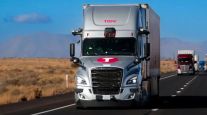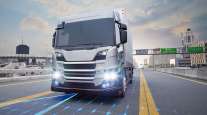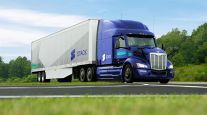Staff Reporter
AV Holds Promise, But Lacks ‘Go Anywhere’ Ability, Panelists Say
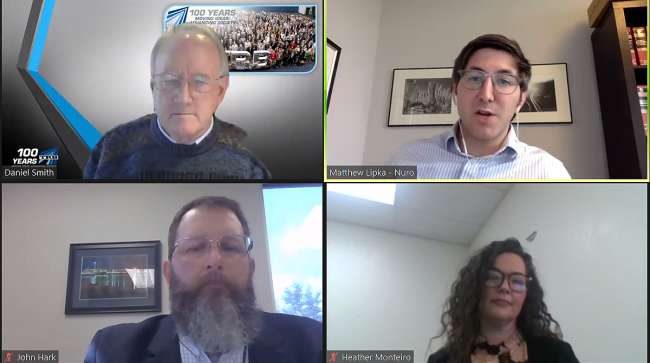
[Stay on top of transportation news: Get TTNews in your inbox.]
Experts advised people to manage their expectations of automated vehicles for their traveling capabilities.
While automated vehicles do not need to stop and rest as humans do, barriers such as road conditions and weather still exist.
Daniel Smith, principal of freight transportation and logistics consulting firm Tioga Group, reminded attendees at the Transportation Research Board’s annual meeting Jan. 27 to consider automated vehicles in relation to their human counterparts.
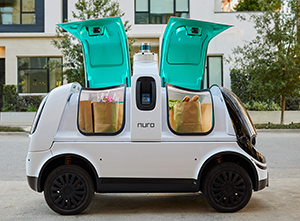
Nuro R2 by Nathan Lindstrom
“There’s probably no such thing as a true ‘go anywhere’ vehicle, and the accessibility for autonomous vehicles has to be compared to the accessibility for human-driven vehicles,” Smith said. “If you have snowstorms in mountain passes that stop everything, there’s no notion that we can expect an autonomous vehicle to somehow survive the conditions, unless it’s a military-grade monster. I think that’s a critical thing to keep in mind.”
For example, Matthew Lipka, head of policy at robotics company Nuro, which deploys autonomous vehicles for last-mile delivery services, said the company’s R2 vehicle is designed to detect severe conditions and stop when it encounters them.
The vehicle, specifically designed to transport goods and which does not hold passengers, can operate in moderate rain and light fog, but will come to a stop in extreme conditions.
The R2 operates in California, Arizona and Texas and delivers groceries in the Houston area through a partnership with Kroger. Lipka said Houston is an attractive location for deployment because it has good roads as well as a massive and diverse customer base.
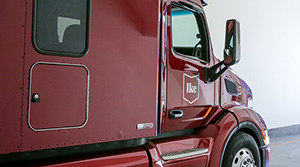
Truck outfitted with Ike's branding. (Ike)
In late December, Nuro announced that it had acquired Ike Robotics Inc., which builds automated trucking technology. In the fall of 2018, the companies struck a deal in which Nuro gave Ike a copy of its autonomy and infrastructure software in exchange for an equity stake in Ike.
“It is too early for us to share any immediate plans in trucking, but we’ve always been interested in this space,” Lipka said. “It is what brought us together with Ike in the first place over two years ago, when we licensed Nuro’s tech to them. Now that the teams have joined forces, we’ll be considering all our options together to see what makes sense.”
Automated freight vehicles, including over-the-road trucks, may perform functions such as moving raw materials from their sources, according to Heather Monteiro, president of research and data science at Hickory Ridge Group, a consulting firm based in Las Vegas. She said these vehicles also have the potential to alleviate the industrywide truck driver shortage. However, Monteiro said challenges such as an increase in costs associated with certain facility labor may occur.
“While the potential benefits are numerous, there are also potential challenges to the desirability of [automated freight vehicle] deployment,” Monteiro said.

Sustainable trucking is here. In this episode, we'll talk to two major players in the transportation technology sector that are helping fleets move closer to total supply chain sustainability. Hear a snippet, above, and get the full program by going to RoadSigns.TTNews.com.
Monteiro said automated vehicles, particularly ones that travel on sidewalks to reach people’s doors, will require state and local governments to update their regulations.
Policy will also need to adapt to account for freight that moves over water via vessels equipped with automated technology, according to John Hark, a lecturer at Texas A&M University at Galveston’s Maritime Business Administration Department. He said many maritime laws are very old. He also said training institutions will need to update their curricula because their graduates will likely encounter watercraft that are remotely operated or completely autonomous.
“When we talk about remote-operated vessels or, in the future, completely autonomous vessels, we’re going to have to take into account maneuvering in port areas [and] maneuvering in high-traffic areas,” Hark said. “We’ll definitely have to take into account how we handle that in the future.”
Want more news? Listen to today's daily briefing:
Subscribe: Apple Podcasts | Spotify | Amazon Alexa | Google Assistant | More


